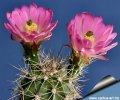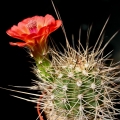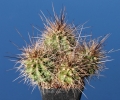Donate now to support the LLIFLE projects.
Your support is critical to our success.
Your support is critical to our success.
Accepted Scientific Name: Echinocereus coccineus Engelm. in Wisliz.
Mem. Tour N. Mexico [Wislizenus] 93, adnot. 1848 [Apr 1848] Wisliz., Wisliz., Wisliz.

Cereus coccineus (Echinocereus coccineus) Photo by: Valentino Vallicelli
AG11 Jarilla Mts. These cacti can clump to form mounds of almost mythic proportions. The birdie-flowers are red with rounded petal tips, they are real traffic-stoppers.
AG11 Jarilla Mts. These cacti can clump to form mounds of almost mythic proportions. The birdie-flowers are red with rounded petal tips, they are real traffic-stoppers.
Synonyms:
- Echinocereus coccineus Engelm. in Wisliz.
- Cereus coccineus (Engelm.) Engelm.
- Echinocereus triglochidiatus var. coccineus (Engelm.) W.T.Marshall & T.M.Bock
See all synonyms of Echinocereus coccineus
back
Accepted name in llifle Database:Echinocereus coccineus Engelm. in Wisliz.
Mem. Tour N. Mexico [Wislizenus] 93, adnot. 1848 [Apr 1848]
Synonymy: 46
- Echinocereus coccineus Engelm. in Wisliz.
- Cereus coccineus (Engelm.) Engelm.
- Echinocereus triglochidiatus var. coccineus (Engelm.) W.T.Marshall & T.M.Bock
- Echinocereus arizonicus subs. matudae (Bravo) Rutow
- Echinocereus matudae Bravo
- Echinocereus arizonicus subs. nigrihorridispinus W.Blum & Rutow in W.Blum et al.
- Echinocereus canyonensis Clover & Jotter
- Echinocereus coccineus subs. aggregatus (Engelm. ex S.Watson) W.Blum, Mich.Lange & Rutow
- Cereus aggregatus (Engelm. ex Emory) J.M.Coult.
- Coryphantha aggregata (Engelm. ex Emory) Britton & Rose
- Coryphantha neovivipara var. aggregata (Engelm. ex Emory) Y.Itô
- Coryphantha vivipara var. aggregata (Engelm. ex Emory) W.T.Marshall
- Echinocereus aggregatus (Engelm. ex Emory) Rydb.
- Escobaria aggregata (Engelm. ex Emory) Buxb.
- Mammillaria aggregata Engelm. in Emory
- Mammillaria vivipara var. aggregata (Engelm. ex Emory) L.D.Benson
- Echinocereus coccineus var. arizonicus (Rose ex Orcutt) D.J.Ferguson
- Echinocereus arizonicus Rose in Orcutt ex Orcutt
- Echinocereus triglochidiatus var. arizonicus (Rose ex Orcutt) L.D.Benson in L.D.Benson
- Echinocereus coccineus var. gurneyi (L.D.Benson) S.Brack & K.D.Heil
- Echinocereus triglochidiatus var. gurneyi L.D.Benson
- Echinocereus coccineus var. kunzei (Gürke) Backeb.
- Echinocereus kunzei Gürke
- Echinocereus coccineus var. rosei (Wooton & Standl.) A.D.Zimmerman
- Echinocereus rosei Wooton & Standl.
- Echinocereus triglochidiatus var. rosei (Wooton & Standl.) W.T.Marshall
- Echinocereus decumbens Clover & Jotter
- Echinocereus engelmannii subs. decumbens (Clover & Jotter) W.Blum & Mich.Lange in W.Blum et al.
- Echinocereus engelmannii var. decumbens (Clover & Jotter) L.D.Benson
- Echinocereus hexaedrus (Engelm.) Rümpler
- Cereus hexaedrus Engelm. & J.M.Bigelow
- Echinocereus paucispinus var. hexaedrus (Engelm. & J.M.Bigelow) K.Schum.
- Echinocereus triglochidiatus var. hexaedrus (Engelm.) Boissev. in Boissev. & C.Davidson
- Echinocereus krausei De Smet. in Förster
- Echinocereus neomexicanus Standl.
- Cereus neomexicanus (Standl.) Tidestr. in Tidestr. & Kittell
- Echinocereus triglochidiatus var. neomexicanus (Standl.) W.T.Marshall
- Echinocereus phoeniceus (Engelm.) Rümpler
- Cereus phoeniceus Engelm.
- Echinocereus phoeniceus var. albispinus Rümpler in Förster
- Echinocereus phoeniceus var. longispinus Rümpler in Förster
- Echinocereus phoeniceus var. rufispinus Rümpler in Förster
- Echinocereus roemeri Engelm. ex F.Haage
- Cereus roemeri Engelm.
- Echinocereus toroweapensis (P.C.Fisch.) H.Fürsch
Echinocereus coccineus subs. paucispinus (Engelm.) W.Blum, Mich.Lange & Rutow in W.Blum et al.
Echinocereus Monogr. (preprint) [4] (1998)
Synonymy: 5
- Echinocereus coccineus subs. paucispinus (Engelm.) W.Blum, Mich.Lange & Rutow in W.Blum et al.
- Cereus paucispinus Engelm.
- Echinocereus coccineus var. paucispinus (Engelm.) D.J.Ferguson
- Echinocereus paucispinus (Engelm.) Rümpler
- Echinocereus triglochidiatus var. paucispinus (Engelm.) W.T.Marshall & T.M.Bock
back
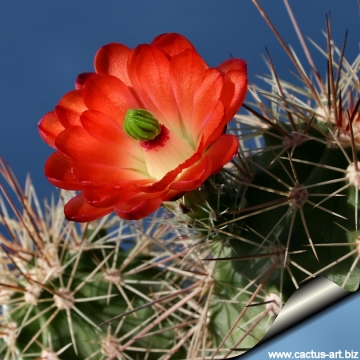
A female flower from different plants show reduced filaments and empty anther sacs held below the stigma lobes. (Echinocereus coccineus) Photo by: Cactus Art
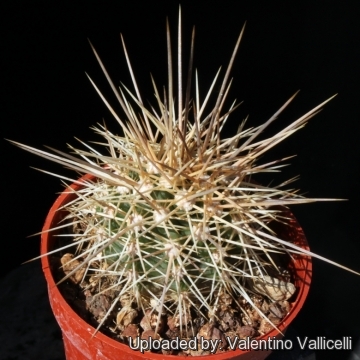
Carizzozo, New Mexico, USA (Echinocereus coccineus) Photo by: Valentino Vallicelli
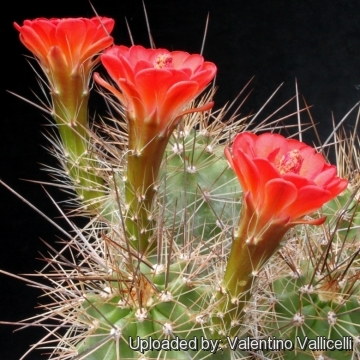
Cereus coccineus (Echinocereus coccineus) Photo by: Valentino Vallicelli
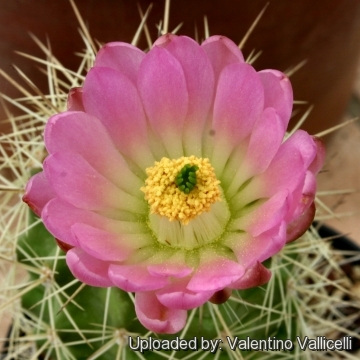
Cereus coccineus (Echinocereus coccineus) Photo by: Valentino Vallicelli
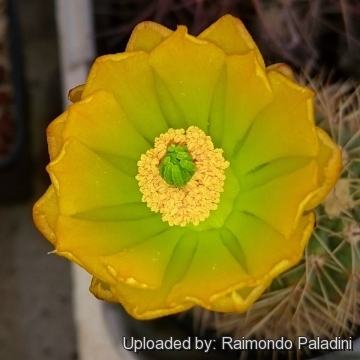
- Echinocereus coccineus AG12 (Collector Alan Gilmore), Jarilla Mountains, Otero County, New Mexico, USA. Rare yellow flower. (Echinocereus coccineus) Photo by: Raimondo Paladini
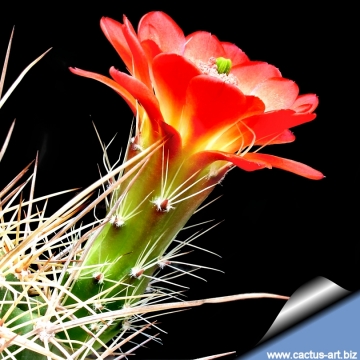
Cereus coccineus (Echinocereus coccineus) Photo by: Cactus Art
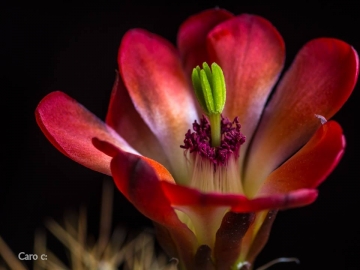
A female flower with green stigma lobes and sterile stamens. (Echinocereus coccineus) Photo by: Carolina González
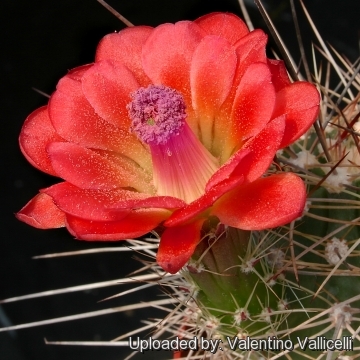
A male flower with abundant pollen. (Echinocereus coccineus) Photo by: Valentino Vallicelli
| Your Actions | |
|---|---|
| Back to Cereus index | |
| Back to Cactaceae index | |
 |
Back to Cacti Encyclopedia index |









